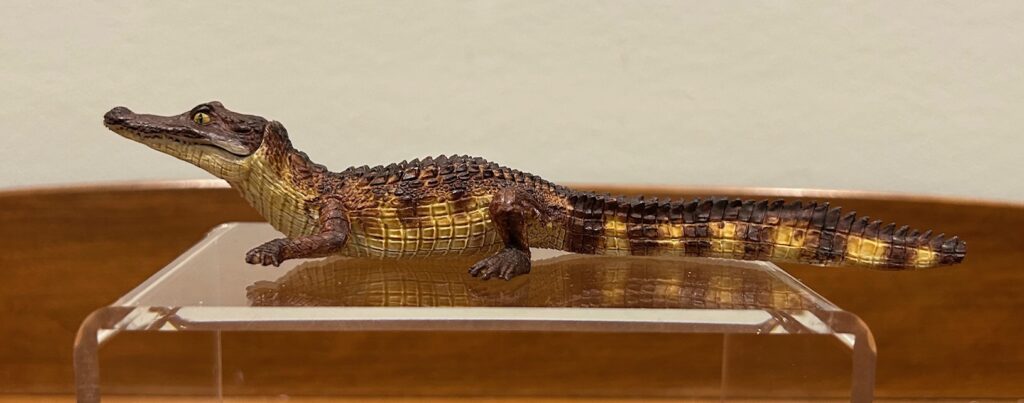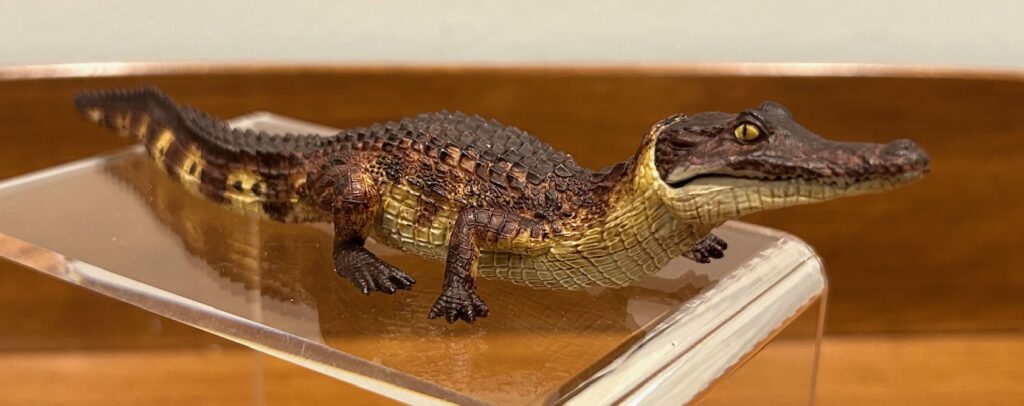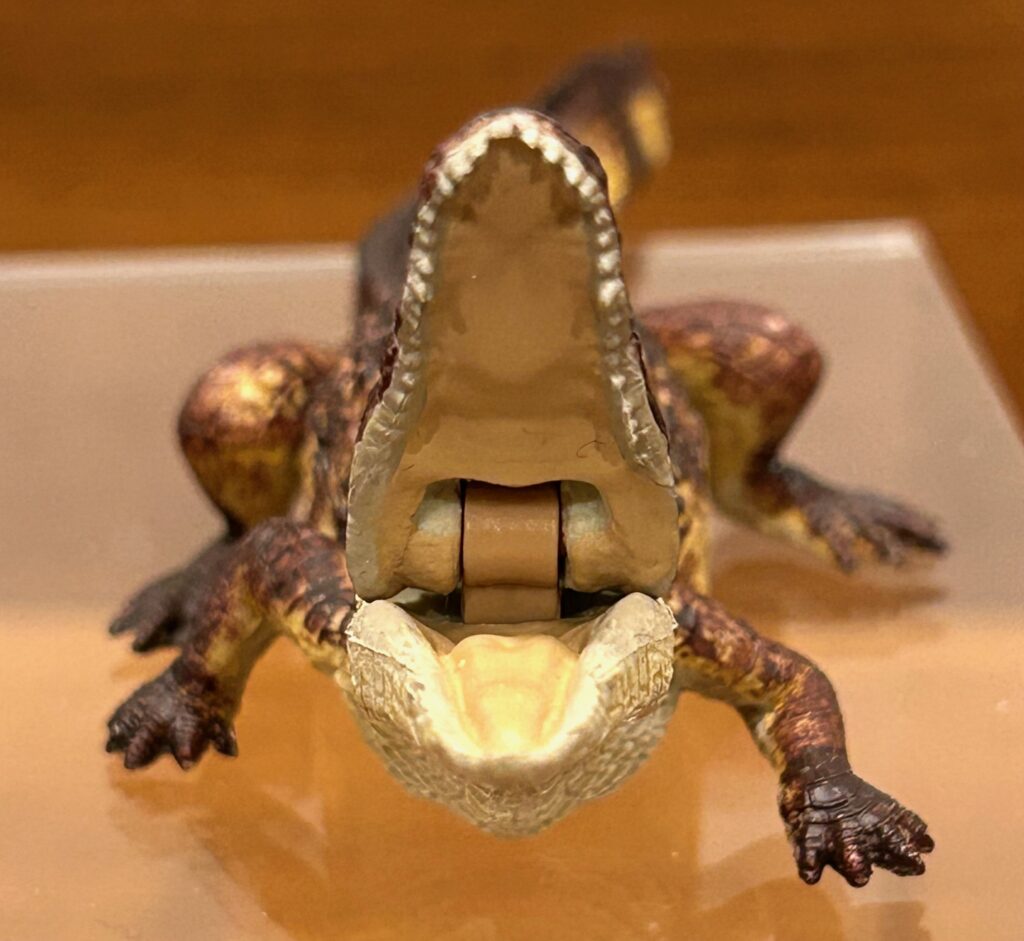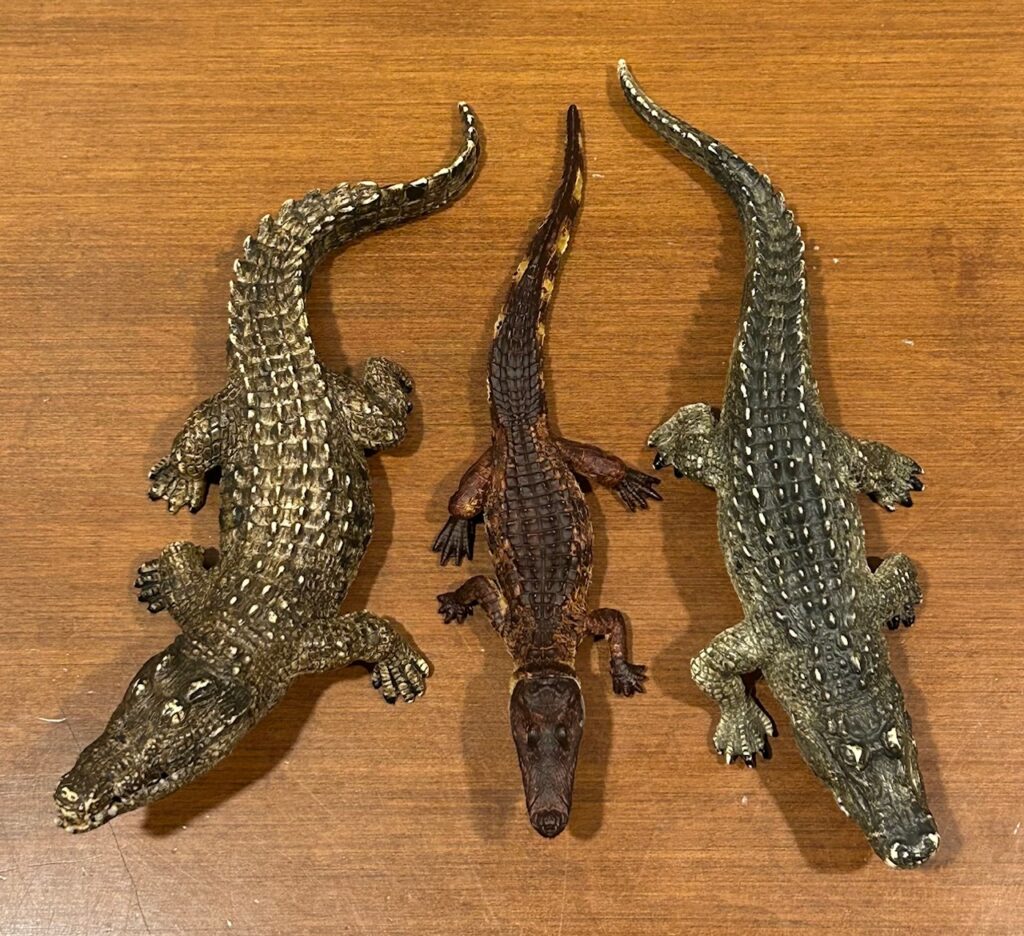Review and images by Suspsy; edited by bmathison1972
Caimans are members of the alligator family that reside in Central and South America. There are presently six living species ranging in size from the 1.4 metre-long Cuvier’s dwarf caiman, which is the smallest living crocodilian, to the 5 metre-long black caiman, which is the largest member of Alligatoridae.

Papo unfortunately has not bothered to denote which species of caiman their 2024 toy is supposed to represent, although its coloration and proportions eliminate any possibility of it being a black caiman. Instead, I believe the most likely candidate to be the spectacled or common caiman (Caiman crocodilus), which grows to a length of 1.5 to 1.8 metres on average and as its name suggests, is the most widespread and abundant of all caimans.


This toy measures 16.5 cm long from snout to tail. It is sculpted resting on its belly with its head raised well off the ground, its left front limb extended forward, and its tail curved to the left. By the looks of it, this caiman could either be basking on a bank, or making its way in or out of the water. Common caimans feed primarily on water snails, crabs, and fish, as well as other reptiles, amphibians, birds, and mammals. They will also consume seeds.

The main colours on this caiman are dark brown on top and beige on the bottom. There are stripes running along the flanks and the tail, and very dark brown spots on the tail as well, but strangely, mine only has spots on the right hand side. The eyes are gold, the teeth are white, and the inside of the mouth is a very dull pink indeed. Common caimans can be either brown, greenish, or yellowish grey in colour, so this toy falls within the range of plausibility.

This caiman’s upper jaw is hinged, allowing it to open to the impressive angle of 50 degrees, thereby allowing a full view of the mouth (and the hinge joint for that matter). The teeth are pleasingly pointy, more so than on Schleich crocodilians. The scales and osteoderms have been lovingly sculpted, from the large flat ones covering the belly to the rough osteoderms protecting the neck and back and the single triangular row at the end of the tail. However, it should be noted that the osteoderms on the neck don’t properly match those on a real common caiman. Moreover, the head lacks the bony ridge between the eyes that inspired the “spectacled” moniker.

Nevertheless, the Papo caiman is quite a good toy overall, sure to please reptile fans of all ages. And besides, it’s a most welcome change from the usual crocodile and alligator toys that are so prevalent. Recommended.
With Schleich Nile crocodile and Schleich American alligator:


Disclaimer: links to Ebay and Amazon on the AnimalToyBlog are affiliate links, so we make a small commission if you use them. Thanks for supporting us!




Better than I thought
Rather than the genus Caiman , I thought this might be one of the dwarf ones… this particular one perhaps?
https://www.reptilesofecuador.com/paleosuchus_trigonatus.html